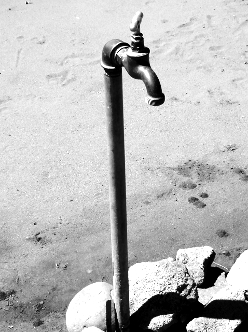Super farm storms ahead despite reported lack of water
 The company behind a massive farm project in Queensland will not be swayed by a report suggesting there is not nearly enough water.
The company behind a massive farm project in Queensland will not be swayed by a report suggesting there is not nearly enough water.
CSIRO has estimated how much land and water will actually be available for the IFED (Integrated Food and Energy Development) proposal on the Gilbert River.
The plan is to build a farm complex including cropping area of 64,000 hectares, relying on two million megalitres of stored water.
The report suggests the scale is too large to be accommodated by the Gilbert River Catchment, but IFED says they have new technologies not factored by CSIRO which will make up the difference.
Researcher Dr Peter Stone says the catchment can supply less than half the proposed farm’s demands.
“We found the possibility of 20,000 to 30,000 hectares of irrigated ag in the Gilbert Catchment,” Dr Stone said.
“We saw that there was the potential for two in-stream dams that together had about 700 gigalitres of storage [700,000 megalitres], certainly not whopping dams.”
IFED chairperson Keith De Lacey said the estimates did not account for their advanced equipment.
“In fact, with our state of the art trickle-tape irrigation and precision application of nutrients, we can crop land which is classed as 4, which is a fair way down the category of rich, fertile soil,” Mr De Lacey told the ABC.
“The report said two million hectares of the Gilbert Catchment is moderately suited for agriculture... so it's very misleading that figure of 30,000 hectares.”
He also said the farm will have more water storage than the estimates allowed.
“We can store, off river, something like three times what they have projected for half the cost. There is nothing in their report that says that our project won't work. It just says that the model they examine doesn't work,” he said.
Mr De Lacey remains confident that the scientific models will not dissuade investors from providing the many millions of dollar required.
“We've got commitments for a substantial part of the first round funding,” he said
“But still a long way to go, and not in a position to state who or where it's coming from.”
The Flinders and Gilbert Agricultural Resource Assessment report is available here.








 Print
Print